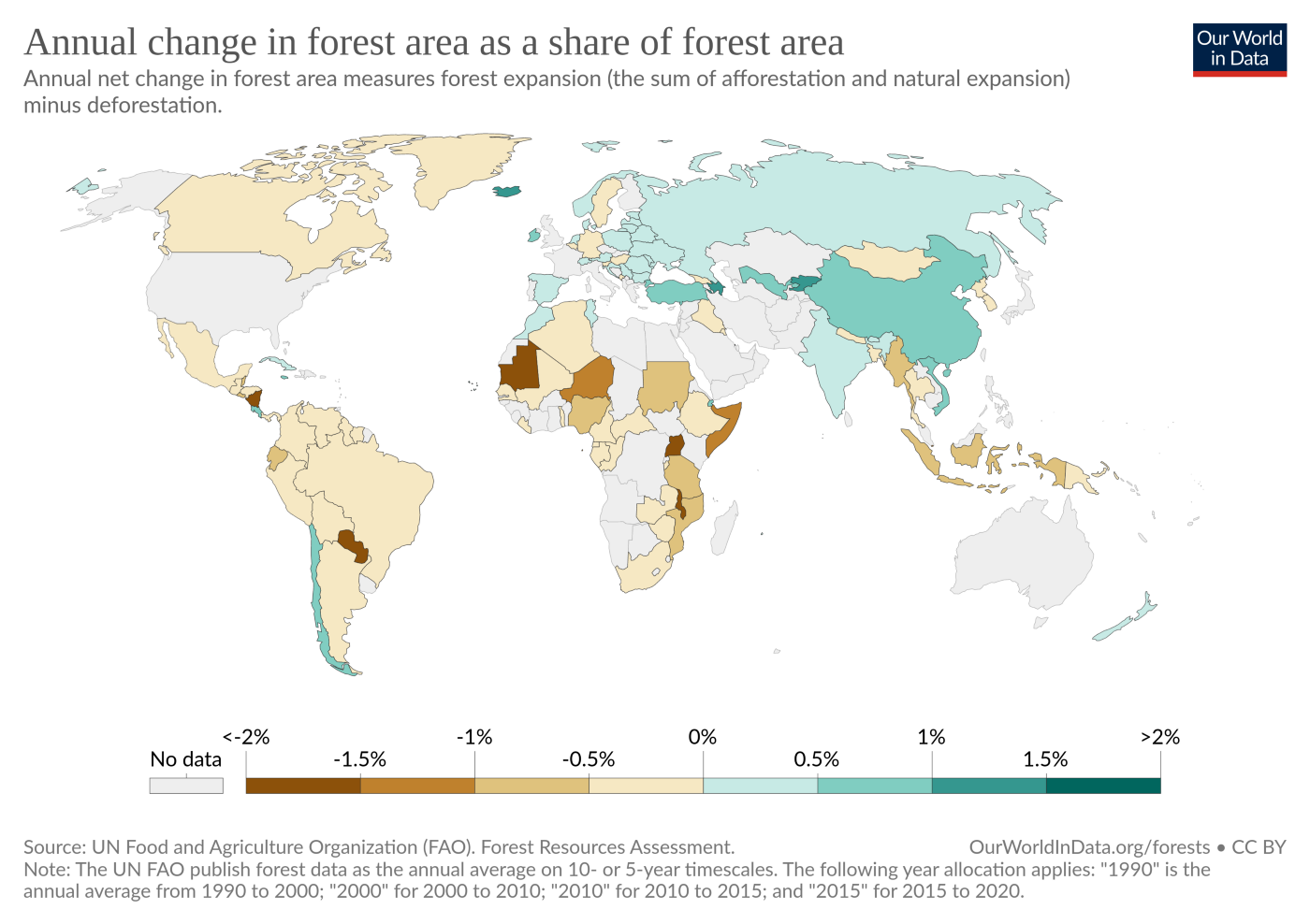INTRO
Background
Many companies use the technique of “carbon offsetting” to reach their sustainability goals. This article analyzes — using first principles — if carbon offsetting can be a viable solution to reach sustainability goals.
Observations and Analysis
Carbon neutrality can be understood as the result of having offset carbon emissions by compensating those emissions elsewhere. A typical example is offsetting by planting trees.
Oftentimes we are talking in terms of “how many trees are being planted this year”, “number of trees is increasing every year”, and “there is more tree canopy cover than in 50 years”. Such analogies can be compelling, but fail to appreciate the first principles of the underlying problem.
What is the given underlying then? The given problem is controlling the net quantity of carbon in the atmosphere, in other words, the total amount of carbon in the atmosphere at a given point in time. To understand complex systems — such as the atmosphere — and the first principles governing such systems, it is useful to reduce the complexity of the system.
For example, let’s imagine a system, where there are 100 Birch trees and one Sumaumeira tree. These are the only trees in the system with reduced complexity.
We know that if we cut all 101 trees, there is no carbon offsetting capability left. We also know that if we don’t anything, the current carbon offsetting capability remains the same.
Then we end up with a question:
“Which one will offset carbon more, 100 Birch trees or one Sumaumeira tree, assuming both at full maturity.”
This question leads us to the first principle of “tree mass”; the greater the mass of the tree — everything else is the same — the greater its ability to offset carbon.
Because Birch trees have a diameter of roughly 0.3 meters and length of roughly 20 meters, and Sumaumeira trees have a diameter of roughly 2 meters and length of roughly 50 meters, using the first principle of tree mass, we can approximate the answer to our question. Assuming both to have equal density, we can use volume as a proxy for mass.
So what is the answer? Because a single Sumaumeira tree has a volume of 157 cubic meters, and a single Birch tree has a volume of 1.43 cubic meters, a single Sumaueira tree will offset 10% more carbon than 100 Birch trees.
Once we understand that tree mass is a first principle in the practice of carbon offsetting by planting trees, we come to understand that age of the tree matters. The closer a given tree is to its full maturity, the more carbon it will offset.
Then, we find that the 100 Birch trees planted for carbon offsetting purposes are about 1% of their mature size 10 years after being planted. We will also find, that Sumaumeira trees tend to be of mature size at the time of cutting them. It follows that to have the carbon offsetting capacity of a single Sumameiru tree, thousands of Birch trees need to be planted.
Furthermore, we have to consider the location of the tree. Whereas Sumameiru trees vegetate year-round, Birch trees tend to vegetate not more than half of the year. The carbon offsetting capacity of a tree during the winter is close to none. Therefore, we have to further double the number of Birch trees to be planted, for every Sumameiru tree we cut down.
So what kind of trees are we planting in the world, and what kind of trees are we cutting down in the world?

We have a dramatic net loss of trees where the trees have a large mass, are mature, and vegetate year-round. In contrast, we have a net gain of trees where the trees have smaller mass, are not mature, and do not vegetate year-round. In other words, we rapidly lose the trees with the most carbon offsetting potential and gain trees with poor carbon offsetting potential.
GOING FORWARD
Conclusion
Planting trees is not a viable solution for reducing carbon emissions as long as we keep cutting down trees with more carbon offsetting potential than the ones we are planting. Because it is virtually always the case — the practice being that mature trees are cut down and young trees are being planted — planting trees can’t be a viable way to reduce net carbon emissions in the atmosphere.
Moreover, instead of moving towards sustainability, we are moving away from sustainability guided by a poor understanding of the matter, and the false sense of security resulting from planting trees.
We should definitely plant more trees than we cut, and we should do it in a locally relevant manner. In other words, if trees are cut down in Brazil, then new trees must be planted in Brazil. Not only that but if Sumaumeira trees are cut down, then Sumaumeira trees must be planted. Acting in such a way would address the problem of biodiversity, as well as other problems, but as we have shown above, it would still not help with reducing the net amount of carbon in the atmosphere.
More important still, is to protect all the natural, mature rainforests, and other major naturally occurring woodlands of the world.

